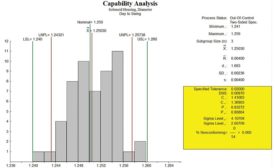Home » continuous improvement
Articles Tagged with ''continuous improvement''
Speaking of Quality | Kathy Lyall
Do employees "live" quality in all of their actions?
Read More
The Unfolding Course of Events
Looking to the past provides some perspective.
June 30, 2020
Continuous Improvement: Ever Forward
How to continually improve and avoid common mistakes along the way.
June 30, 2020
Ask the Expert
Capability Analysis
This first column will focus on this technique.
June 25, 2020
Measurement Uncertainty: A Primer
A reading means little without knowing the uncertainty involved.
May 1, 2020
Stay in the know with Quality’s comprehensive coverage of
the manufacturing and metrology industries.
eNewsletter | Website | eMagazine
JOIN TODAY!Copyright ©2025. All Rights Reserved BNP Media.
Design, CMS, Hosting & Web Development :: ePublishing












